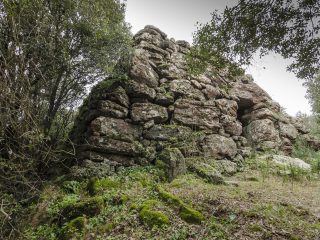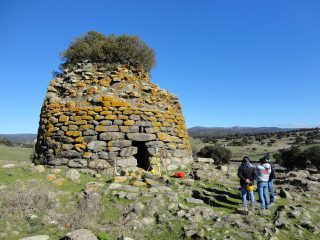The museum was opened in 2002 and is housed in the nineteenth century palazzo previously owned by Giorgio Asproni, a Sardinian politician and intellectual.
The exhibition covers six rooms, documenting a wealth of paleontological and archaeological heritage from the province of Nuoro and the history of man from Paleolithic to Medieval times.
The paleontological section, displays fossils of different vertebrates, now extinct, which inhabited Sardinia between the Pliocene and the Pleistocene periods, uncovered on Monte Tuttavista (Orosei-Galtellì) the Corbeddu Grotto (Oliena).
The exhibition continues with splintered stone finds from the Paleolithic and Mesolithic periods. The Neolithic period is represented by vases, idols, arrowheads and obsidian and flint tools found in grottoes and the domus de janas necropolises. There are also finds of various cultures from theCopper Age: Filigosa, Abealzu and Monte Claro.
The tomb of Sisaia, a woman who lived in the Ancient Bronze Age and whose skull shows signs of cranium drilling, which she survived, dates from the Bonnanaro culture (approx. 1800 B.C.).
Pieces from the Nuragic period and the Bronze and Iron Ages, come from important sites such as Nuraghes, villages and especially sanctuaries, which were in abundance in the province. Particularly noteworthy are the stone Nuraghe models, pottery vases and numerous bronze finds like basins, small bronze statues and incense boats that demonstrate the skills of Nuragic metal workers. Particularly important is the Mycenaean alabastron from the Arrubiu nuraghe in Orroli.
The exhibition continues with finds from the Phoenician-Punic and Roman eras, such as glass paste necklaces, talismans, pottery and epigraphs, including the significant military diploma of Hannibal, uncovered in Posada.
The exhibition concludes with material from Medieval times: Byzantine buckles, necklaces and Renaissance majolica.





















